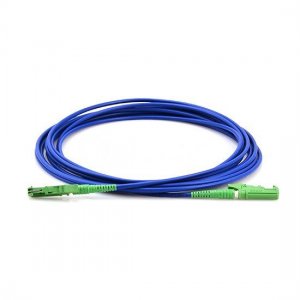
# Fiber Optic Patch Cable Applications and Benefits
## Introduction to Fiber Optic Patch Cables
Fiber optic patch cables, also known as fiber jumpers or fiber patch cords, are essential components in modern communication networks. These cables consist of optical fibers enclosed in protective jackets with connectors on both ends, enabling quick and reliable connections between devices in fiber optic systems.
## Common Applications of Fiber Patch Cables
### Telecommunications Networks
Fiber patch cables serve as the backbone of telecommunications infrastructure, connecting various network elements in central offices, data centers, and customer premises. They enable high-speed data transmission over long distances with minimal signal loss.
### Data Center Connectivity
In modern data centers, fiber patch cables provide the critical links between servers, switches, and storage devices. Their high bandwidth capacity supports the massive data flows required by cloud computing and big data applications.
### Medical Imaging Systems
Fiber optic patch cables are widely used in medical equipment such as endoscopes and imaging systems. Their flexibility and immunity to electromagnetic interference make them ideal for sensitive medical applications.
### Industrial Automation
Manufacturing facilities utilize fiber patch cables for machine-to-machine communication and control systems. Their durability and resistance to electrical noise ensure reliable operation in harsh industrial environments.
## Key Benefits of Fiber Optic Patch Cables
### Superior Bandwidth Capacity
Fiber patch cables offer significantly higher bandwidth compared to traditional copper cables, supporting the growing demand for high-speed data transmission in modern networks.
### Immunity to Electromagnetic Interference
Unlike copper cables, fiber optics are not affected by electromagnetic interference (EMI) or radio frequency interference (RFI), ensuring stable signal transmission even in electrically noisy environments.
### Enhanced Security
Fiber optic cables are more secure than copper alternatives as they don’t radiate signals and are extremely difficult to tap without detection.
### Longer Transmission Distances
Keyword: Fiber Patch Cable
Fiber patch cables can transmit signals over much greater distances without requiring signal boosters, making them ideal for wide-area network connections.
### Compact and Lightweight Design
The small diameter and lightweight nature of fiber patch cables make them easier to install and manage, especially in space-constrained environments like data centers.
## Choosing the Right Fiber Patch Cable
When selecting fiber patch cables, consider factors such as:
– Cable type (single-mode or multi-mode)
– Connector types (LC, SC, ST, etc.)
– Cable length requirements
– Jacket material (plenum-rated or riser-rated)
– Bend-insensitive fiber options for tight spaces
## Conclusion
Fiber optic patch cables have become indispensable in modern communication systems, offering unparalleled performance, reliability, and flexibility. As technology continues to advance, these cables will play an increasingly vital role in supporting our connected world. Understanding their applications and benefits helps network professionals make informed decisions when designing and maintaining fiber optic infrastructure.